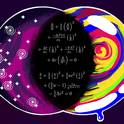Article
Dissipative Solitons in the Cubic-Quintic Complex Ginzburg-Landau Equation: Bifurcations and Spatiotemporal Structure
Electronic Theses and Dissertations
(2007)
Abstract
Comprehensive numerical simulations (reviewed in Dissipative Solitons, Akhmediev and Ankiewicz (Eds.), Springer, Berlin, 2005) of pulse solutions of the cubic–quintic Ginzburg– Landau equation (CGLE), a canonical equation governing the weakly nonlinear behavior of dissipative systems in a wide variety of disciplines, reveal various intriguing and entirely novel classes of solutions. In particular, there are five new classes of pulse or solitary waves solutions, viz. pulsating, creeping, snake, erupting, and chaotic solitons. In contrast to the regular solitary waves investigated in numerous integrable and non–integrable systems over the last three decades, these dissipative solitons are not stationary in time. Rather, they are spatially confined pulse–type structures whose envelopes exhibit complicated temporal dynamics. The numerical simulations also reveal very interesting bifurcations sequences of these pulses as the parameters of the CGLE are varied.
Disciplines
Publication Date
May, 2007
Citation Information
S.C. Mancas. "Dissipative Solitons in the Cubic-Quintic Complex Ginzburg-Landau Equation: Bifurcations and Spatiotemporal Structure" Electronic Theses and Dissertations (2007) p. 1 - 140 Available at: http://works.bepress.com/stefani_mancas/122/
